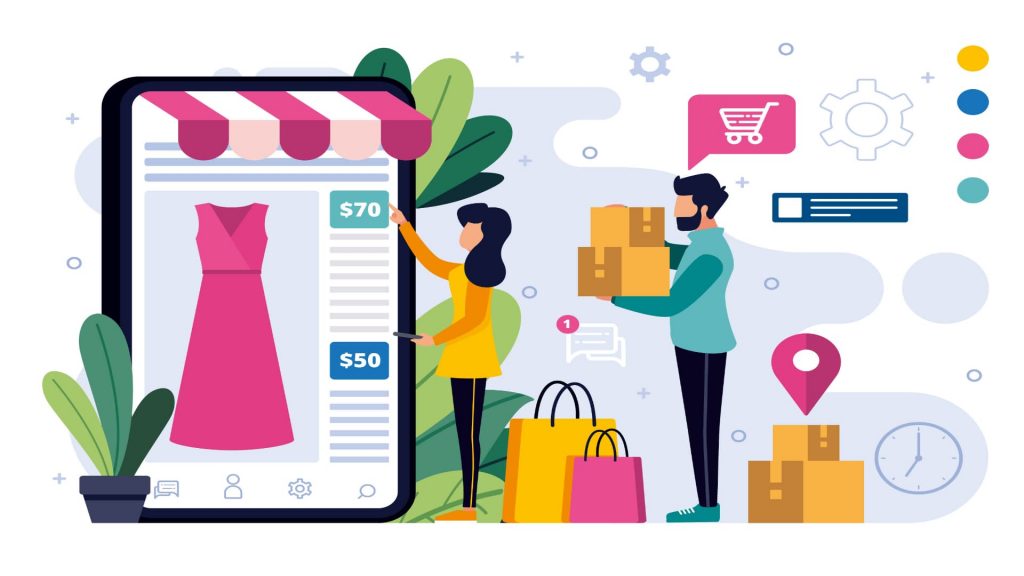Everything you Need to Know About Social Commerce

Author : Abishek Surya RS 6th Nov 2019

For so many of us today, buying a product online is pretty normal and we do it without hesitation. Shopping in a physical store and shopping online are becoming more and more similar with each passing year. This shift to E-commerce has now grown and evolved into what is called social commerce.
Simply put, when E-commerce and social media decided to merge, we ended up with social commerce. Social commerce as a concept started as early as 2015, with shoppable posts on Facebook, Twitter & Pinterest. Recently with the growth of Instagram, YouTube, and Snapchat, we are now at the beginning of using social commerce as a viable marketing strategy. In this blog post, you will learn everything relevant to social commerce.
What is Social commerce?
Social commerceSocial CommerceSocial commerce is a subset of electronic commerce that involves social media, online media that supports social interaction, and user contributions to assist online buying and selling of products and services. is selling products through the social media platforms where users can purchase the product within the platform, without leaving the site at all. The payment gateway gets integrated within the social media site. It is about customer convenience and reducing the friction in converting a potential buyer into a customer.
A few examples of social commerce in action include –
- Enabling commerce on Facebook posts.
- Buyable pins on Pinterest.
- Shoppable posts on Instagram.
- Branded and sponsored posts on Twitter.
- Product walk-through videos on Youtube.
Why is it so popular?
Though E-commercee-commercee-commerce is the activity of electronically buying or selling products on online services or over the Internet. had a wide reach, one thing it lacked was a social experience. Shopping by default warrants a collective experience and companies using social commerce are beginning to address this situation.
According to a 2019 Pew Survey Research on social media usage across age groups and demographics in the US,
The majority of Facebook, Snapchat and Instagram users visit the site daily. About 74% of Facebook users, visit the site daily. Across age-groups, Youtube is being used by 51% now compared to 45% in 2018. Whatsapp remains popular among Hispanics with 42% using it and LinkedIn is used by half of the college graduates and high-income households compared to 10% fewer by those without college graduation and from low-income households.
Instagram and Snapchat are popular among 18-29-year-olds with more than 70% using it daily & Pinterest is used by women 3x for product recommendations than men, with the gap being bridged every passing year. This essentially means 7-in-10 adults who use Facebook visit it every single day. For Instagram, roughly 7-in-10 users in the age group 18-29 visit the site every day, with 60% doing it several times a day. For Snapchat, the ratio is even better with 8-in-10 coming back to the site multiple times during a day.
This is why social commerce is growing in favor of even major companies. The millennials are choosing social and businesses are choosing to engage them where they are most comfortable.
Where is Social commerce today?
The same research clearly reveals that Youtube and Facebook remain the most widely used online platforms among US adults. More and more people are turning to Social mediaSocial mediaSocial media are interactive computer-mediated technologies that facilitate the creation and sharing of information, ideas, career interests and other forms of expression via virtual communities and networks. for product recommendations and reviews. Use social shopping, be an early mover and take full advantage of this new marketing strategy.
Here are 2 points to consider when getting into social commerce:
- You can get your product in front of audiences that you never knew existed. It is a means to expand your customer outreach.
- Drive conversions right from your social media page by eliminating friction between its listing and final purchase.
What key trends should you know?
Mobile
A great mobile experience needs to take precedence as more and more people start using mobile apps on their smartphones. With smartphones being the primary medium of social media engagement, it has become imperative to design mobile-first, responsive pages. By ensuring a simple, effective design, you can get your audience talking about your products.
Visual
As users scroll through social media, they might not notice your product in the information overload. To make your product appealing and distinct, it needs to stand out visually and make the user want to click on your post. There is so much to do in this aspect. The better the UI/UX, the better the user engagement. Please focus on making your social media posts, interactive and authentic.
Trust
You grow via social commerce by building a relationship with your customers. Users expect brands to care about them. They need quick and responsive support when looking for a product recommendation or customer service. This is where the use of ChatbotChatbotA chatbot is a piece of software that conducts a conversation via auditory or textual methods. Such programs are often designed to convincingly simulate how a human would behave as a conversational partner. and messaging apps become essential.
A page that responds back to a customer in a day is less likely to be successful as compared to a page that responds within an hour. The quality, simplicity, and convenience through customer support help to build trust with the customer.
What’s next with Social commerce?
Social commerce is still relatively new and even big brands are testing and learning. However, since the entry barriers are relatively low, it provides an opportunity for small businesses to experiment with their marketing strategy in social shopping. Here are the 3 things that should help you in this exploration.
- Focus on the best-fit site. If you have the highest interaction on Twitter, start there.
- Know your audience. Without audience segmentation & targeted ads, do not do this.
- Make use of sponsored/promoted ads to reach a wider audience for brand awareness.
As eCommerce evolves, digital marketing continues to remain an integral part of a business marketing strategy. TechAffinity with its data-driven and ROI based campaigns can help you reach a wider audience while sustaining the quality of your products. You can schedule a meeting with us and send your queries to media@techaffinity.com. Our team will get back to you with the best possible recommendations and solutions.
